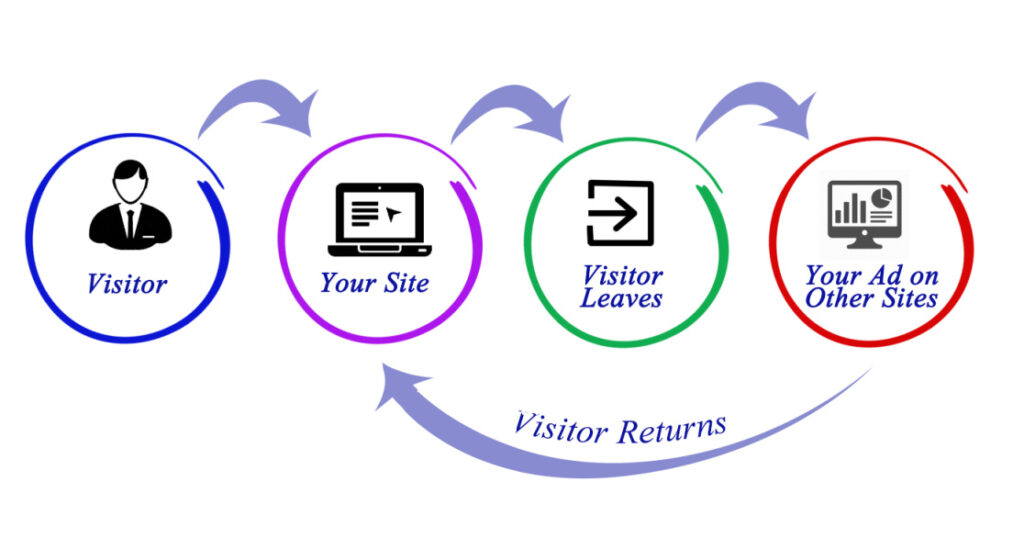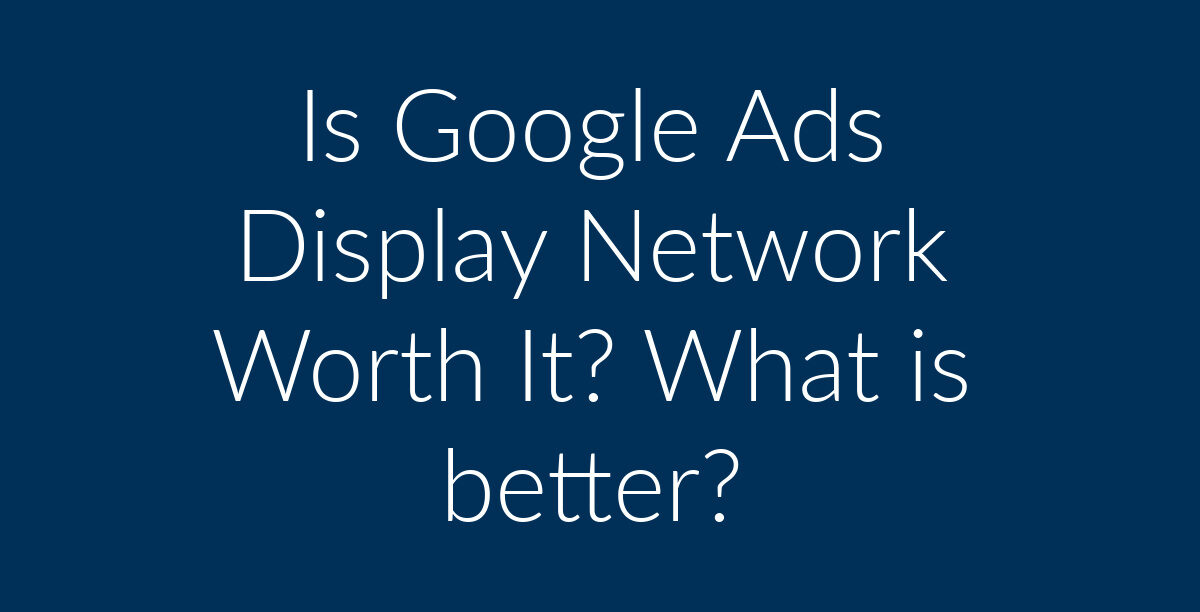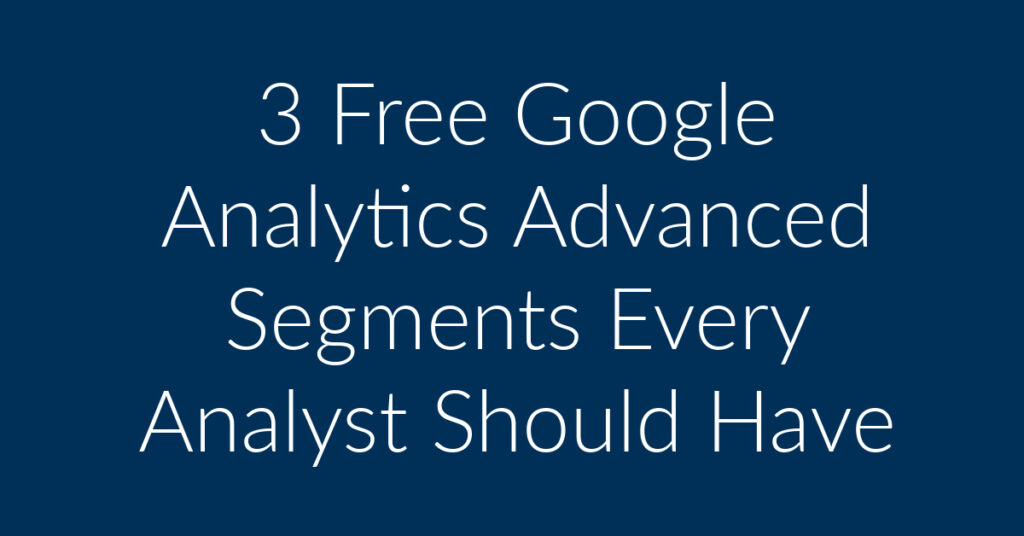Is the Google Ads’ Display Network worth it? That’s a question that I get from my clients almost on a daily basis. Hi, my name is Francisco, and I am the owner of Planet Marketing, a Digital Marketing Agency. My company specializes in Google Ads, Facebook Ads, and Remarketing. I have a number of clients whose Google Ads accounts I handle on a daily basis. In this article, I will discuss the merits and demerits of running ads on the Google Display Network. I will also look at alternatives to the Google Ads Display Network. The post is divided into the following sections;
- What is the Google Ads Display Network?
- Display Ads vs Search Ads.
- When to use Display Ads.
- When to use Search Ads.
- Alternatives to the Google Ads Display Network.
What is the Google Ads Display Network?
As an internet user, you are probably already very familiar with the Google Display Network. You come across ads featured on the network on a daily basis. Google has a network of over 2 million websites on which Google Ads appear.
That’s the Display Network. Owners of these sites sign up with Google AdSense and they set up their websites to display ads from Google. In return, they get paid both for both clicks and impressions on these ads.
What are Google Search Ads?
On the other side, are Search Ads. These appear on Search Engine Result Pages (SERPs) on Google. If you use Google, you will be very familiar with search ads. Type in a query such as “restaurant Chula Vista” and you will get results that include search ads. These ads appear at the top and both of the page.
Search vs Display Ads
So, what’s the difference between Search and Display Ads? The table below highlights some of the differences between search and Display Ads;
| Search Ads | Display Ads |
|---|---|
|
Appear on Google Search | Show up on sites forming part of the Display Network |
| Text based | Text, images and video |
| Auction based | Auction based |
| Pull advertising | Push advertising |
| Higher conversion rate | Lower conversion rate |
Search ads use a pull approach, while Display ads use a push approach
One of the major differences between Search and Display Ads is their approach to the display of ads. Search ads use what can be referred to as a pull approach, while Display ads use what can be termed a push approach.
With the display network, one is pushing a product where there was really no intent by the person visiting a website to see a message about your products or services. With Search Ads, however, people are already looking for a product.
As an example, somebody that searches for a “Dentist near me,” is already looking for the services of a Dentist. Whereas somebody who gets shown a Dentist’s ad while going through a Sports website is a bit removed from the product that’s being advertised.
Search Ads vs Display Ads: How does each perform?
Let us briefly take a look at the performance metrics for Display Ads vs Search Ads. The metrics that we will look at here are conversion rate and Cost Per Click CPC. The table below highlights the key performance differences;
|
Feature | Display Ads | Search Ads |
|---|---|---|
|
Conversion Rate | 0.57% | $0.59 |
| CPC | 4.4% | $2.41 |
As you can see, Search Ads tend to perform better than Display Ads. That’s largely because with Search Ads, people are already actively looking for your products or services. A person that searches for “cheap laptop,” is already looking to buy a laptop.
A person that’s shown an ad featuring your laptops while browsing across the Display Network, on the other hand, probably has no intend of buying a laptop at that point in time. Yes, they may decide to buy a laptop after seeing your ad, but the initial intend is low.
Hence you see the conversion rate for Display Ads standing at 0.57%. The conversion rate for Search Ads, on the other hand, stands at 4.4%. Based on that, one would wonder, is the Google Ads Display Network worth it?
Well, you can see that the CPC for Display ads is correspondingly lower than that for Search Ads. For Search Ads, the CPC stands at about $2.41, while that for Display Ads stands at $0.59. It’s cheaper, therefore, for your ads to appear on the Display Network, which tends to negate some of the shortcomings. Below, let us look at when you should use the Display Network.
When to Use the Display Ads
The following are instances where using the Google Ads Display Network becomes worth it;
For promoting brand awareness
We have already noted that the Google Ads Display Network is composed of over 2 million websites. These websites are scattered around the world. They range from YouTube to news sites and personal blogs.
The Display Network is, therefore, worth if for those looking to maximum exposure. If you are looking for brand awareness, then this is the platform for you. You are much more likely to reach a wide audience that would be the case with Search ads.
Does this mean your ads will appear on random sites?
Many advertisers worry that the Display Network means their ads will appear on random sites. However, that is actually not the case. You have varying degrees of control over where you wish your ads to appear.
You can use targeting options to determine where your ads will appear. As an example, you can have your ads only appear in the United States. You can even be more specific, by choosing to have your ads appear on certain sites.
The Google Ads Display Network is worth it for visual products
We have already noted that Search ads are mostly text. Of course, there are extensions out there that you can get to enhance the appearance of your ads. However, you are rather limited on the visuals.
With Display Ads, on the other hand, there are no such restrictions. Your ads are not limited to text, but they can include images and videos. Display ads are good for promoting the following example product categories;
- Home décor
- Holiday destinations
- Entertainment
- Consumer goods
- Digital goods
For products that have longer sales cycles
If your products have a longer sales cycle, the Google Ads Display network becomes worth it. Many products fall into this category. As an example, nobody is probably going to buy a car or a house immediately after seeing an ad online.
It takes longer for people to decide to buy these types of products. In that case, the Google ads display network becomes worth it. The aim in these cases is to ensure that your products remain in people’s minds for the longest times possible. You have various tools that you can use in this regard;
Retargeting

Diagram of Retargeting
Retargeting is one of the major strength points for the Google Ads Display Network. That conversion rate that may have appeared to be rather low at the onset can be boosted through retargeting. But what is retargeting.
Retargeting is also referred to as remarketing. It involves keeping track of a visitor’s interaction with a website. From there, that person is then shown relevant ads as they visit other sites.
Most people will be familiar with retargeting from Google. Ever noticed those ads that seemingly follow you from one website to another? Well, that’s retargeting at play.
With remarketing, you can boost your conversion rate significantly. It’s, therefore, one thing that makes the Google Ads Display Network worth it.
Cross channel marketing
This is another tool that you can use on the display network to keep people interested in your products and services. Remember we have already noted that the Display Network covers a wide range of websites. People access it from different channels and devices.
The Google Ads Display Network is worth it for Niche markets
We are still trying to answer the main question in this article; is the Google Ads Display Network worth it? If you want to reach niche markets, then Display Ads are your answer. Google does not show your ads on random website.
In fact, Display Ads are shown on relevant web pages based on the target keywords. So, if you are a company that sells food for pet snails, your ads will be shown on websites that deal with this niche topic. They will also be shown on sites dealing with exotic pets in general.
In other words, Display Ads are contextual in nature. They are based on the context; the contents of a particular web page. This increases the chances that people will be interested in whatever it is that you are selling, because it is already relevant to what they are reading.
When to use Search Ads
Search Ads are the most common form of PPC marketing. They are definitely some of the simpler ways that you can use to reach out to your target audience. So, when should you use search Ads?
For Emergency Products and Services
Someone that searches for “plumber near me,” probably already has a mess at hand. It’s an emergency. In that case, Search Ads would be the best. It’s more than likely that the person doing the search will pick just about the first company that appears on the top of SERPs results for their query. Search Ads are, therefore, great for plumbers, electricians and others.
If you are just getting started
We have already noted that Search Ads tend to be simpler to implement. That’s largely due to the fact that they are text only. They are the place to go for those that are just getting started with PPC advertising.
You can have an ad up and running in a couple of minutes. We do need to say that Search Ads, for all their simplicity, have hidden depths. We have already noted that there are plenty of extensions that can be used to enhance their performance.
If you are on a limited budget
Search ads are also great for those on limited budgets? But how is that considering that they have a higher cost per click? Well, it all has to do with conversions. You are a lot more likely to be success with search ads than you are with Display ads.
We have already stated that the conversion rate for Search Ads stands at 4.4%. Compare that with Display Ads, which have a conversion rate of 0.56% and you will see why Search Ads just about make the most sense for those looking to have their money achieve the best results.
Alternatives to the Google Ads Display Network
So far in this article, we have noted that the Google Ads Display Network is worth it for advertisers, though it has a number of limitations. The most prominent of these is the intent of the person looking at the ad. With Display Ads, products and services are being pushed to people who have no intention of buying the product. But what are the alternatives to the Google Display Network?
1. Google Search Ads
We have already extensively covered Google search ads in this article. So, we will not go into detail. They are probably be the first port of call as far as alternatives to Google Display Ads are concerned. Search Ads, as we noted, are text based. They appear at the top and bottom of search engine result pages.
Their strength lies in the people are already looking for a product when they carry out a search. Someone who searches for a “hotel Chula Vista,” probably already wants’ to find a place to stay while visiting Chula Vista.
As a result, Search Ads tend to perform higher than Display Ads. It all has to do with the intention of the person seeing the ad.
Should you do both Search and Display ads?
There is nothing really limiting businesses from taking a dual approach; using both search and Display ads. However, I advise you to separate the 2. The contexts for Search and Display Ads are gulfs apart. You cannot pluck a search ad and run it directly as a display ad.
You will have dismal results if you do this. Instead, you should think about your audience in either case and come up with ads that are specific to the network. We have already noted that Display Networks can be very visual, making them better placed to attract people as they browse across various websites.
2. Facebook Advertising
Facebook Ads are another great alternative to the Google Display Network. Facebook’s major strength is its size. As you can see in the above graph, the platform currently plays host to over 2.7 billion monthly active users.
As a business, it simply means you have that many chances of reaching your target audience. Whatever the business you may be into, chances are high that you will find the people that you are looking for on Facebook. The table below compares Google’s Display Network and Facebook Ads for various metrics;
| FEATURE | GOOGLE DISPLAY NETWORK | FACEBOOK ADS |
|---|---|---|
| Reach of all internet users | 90% | 51% |
| Revenue | 181 billion | 85.9 billion |
| Average CTR | 0.4% | 0.051 |
| CPC | $0.75 | $0.80 |
3. Microsoft Advertising
The Microsoft Audience Network
Away from search ads, Microsoft has what is referred to as the Microsoft Audience Network. Microsoft’s Audience Ads work in about the same way as Google’s Display Ads. And they allow you to reach hundreds of millions of people. You can learn more about Microsoft Audience Ads here.
Summary
So, is the Google Ads Display Network worth it? That’s the question that we sought to answer in this article. We noted that Display Ads have a lower conversion rate than Search Ads. However, they cost far less per click.
We also noted that there are instances where Display Ads work best. An example would be for business that sell capital products, such as vehicles and houses. People are unlikely to buy those based on one click. The trick with Display Ads is to use tools such as remarketing to improve on their effectiveness.
There is nothing really stopping a business from using both Display and Search other. However, they need to be treated as separate units. That’s because the markets that they reach are entirely different. Search Ads reach people looking for a particular product or service.
Display Ads try to push people who are otherwise not interested to take a particular course of action. Alternatives to the Google Display Network include Search Ads, Facebook Ads and Microsoft Ads. If you are interested in Facebook Ads, sign up for my Facebook Ads Mini course using the form below;



